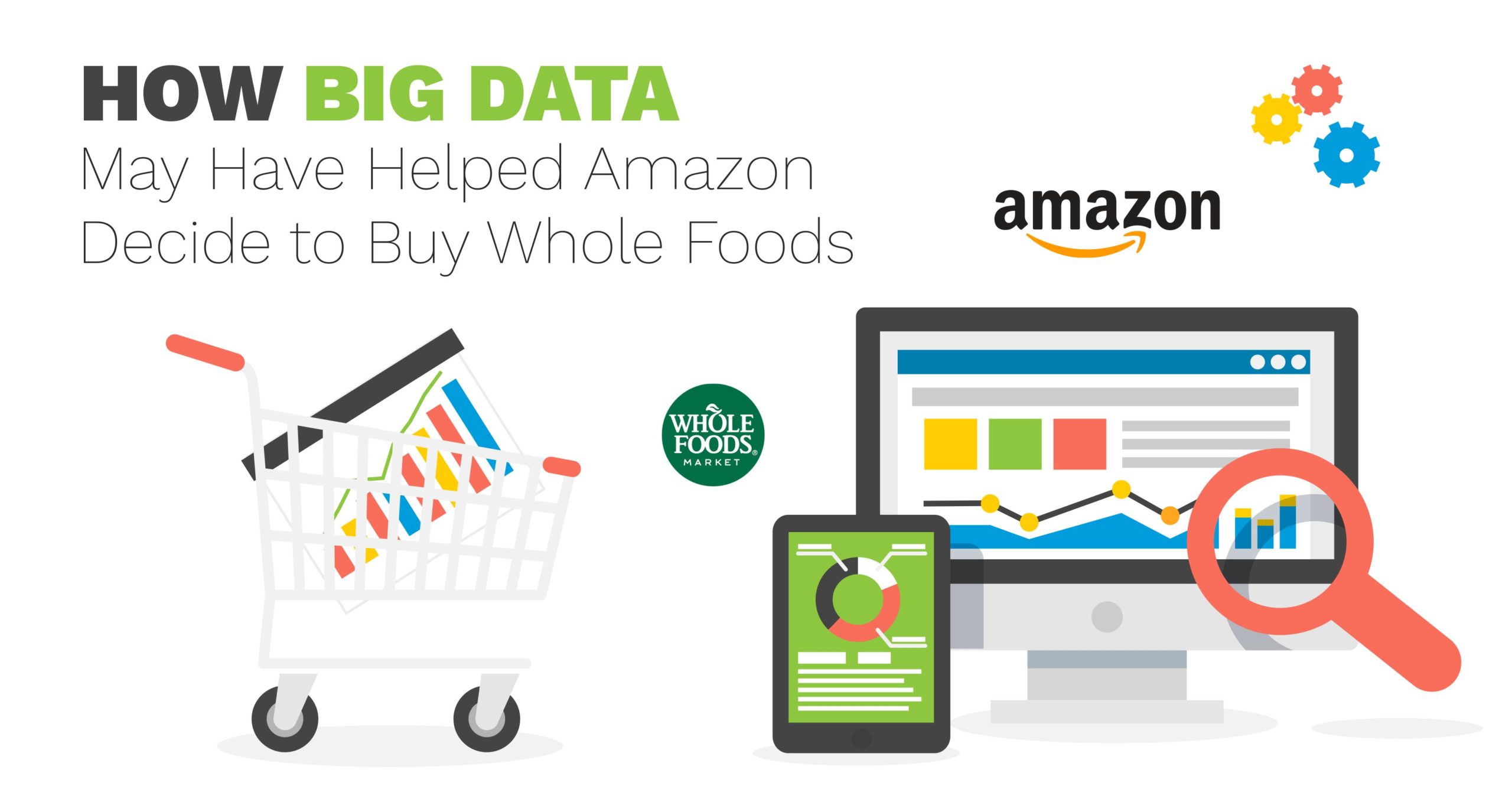Amazon’s $13.7 billion deal with Whole Foods seemed to come out of nowhere – or did it? Why would a huge, online retailer buy a brick and mortar grocery store? There’s been a lot of conjecture on the Interwebs. We couldn’t resist throwing our two cents in about how big data may have helped Amazon decide to buy Whole Foods.
What we know
We may not know exactly what Jeff Bezos had in mind, but here’s what we do know: The grocery market industry is worth $800 billion, and Amazon has been testing ways to get in on that for a while. If you’re a frequent Amazon Prime Now user, you’ve likely noticed the ever expanding list of produce and pantry items that will come straight to your door. If you live in one of 17 major metropolitan areas, you might know about AmazonFresh, a full-fledged grocery service that Amazon has been testing since 2007.
But that doesn’t really answer the question of what the king of ecommerce and delivery wants with 431 Whole Foods locations. John Hwang, formerly of Goldman Sachs, used Quora to give his opinion on the matter. In a nutshell, Amazon gains:
- 431 stores in the right neighborhoods, i.e., “prime retail space in affluent areas, nationwide, for just ~ $32 million per store” (in some markets, that’s a real bargain!)
- The distribution network and relationships Whole Foods has built not only with vendors and suppliers of fresh, organic produce, which is arguably the future of food, but also with the middle and upper class people who frequent Whole Foods (and who have the expendable income that Amazon likes)
- Fully-staffed grocery stores – something not to be sneezed at in any sector of retail
And, as Hwang summarizes, “other valuables in the balance sheet.”
These elements mean (and we’re quoting from Hwang’s answer, because we liked it so much):
- Faster Delivery: Near-instant expansion of Amazon Fresh and Prime Now – if Amazon chooses so. They can leverage the local FC network that Whole Foods already has.
- Better Selection: Whole Foods’ unique and exclusive supplier and vendor network, now available on iOS and Android.
- Lower Prices: Apply Amazon’s technology investments in checkout experience (e.g. Amazon Go) onto lagging brick and mortar experiences.
End quote.
How did Amazon know this would work? Because of data. Data tells them that the same demographic that signs up for and uses Amazon Prime is likely to shop at Whole Foods. They want to keep building their on-demand delivery empire. This move also makes them more competitive against other brick-and-mortar grocery stores, with which Amazon has already been trying to compete with Prime Pantry.
In other words, in some ways, while nothing is a sure bet, the data took some of the risk out of the decision. The data told Amazon that a lot of their customers are already using Whole Foods. Now, Amazon will get more of their dollars through another outlet AND be able to continue innovating and disrupting the industry by applying their developing technology to the network and infrastructure established by Whole Foods.
It’s all about the data
Amazon is a behemoth when it comes to big data. You better believe the company tracks everything you do. Search queries, online behaviors, in-app behaviors …
Every time you’ve ever wondered if you can get an item, any item, on Prime Now and then searched for it, yeah, there’s a record of that. There are also records of how many other people searched for that same item. And where. Data is the reason why there is a slew of seemingly random things, like sleeping bags, party hats, and big screen T.V.s, available for delivery.
To us, the Amazon purchase of Whole Foods is more of a testament to how data truly drives business decisions. Think about it. Who uses Amazon Prime Now and AmazonFresh? Where are they likely to live? Our guess is that when the decision makers at Amazon looked at the data about their users, reviewed their purchase histories, and dug into their demographics, they probably discovered a huge overlap. Whole Foods stores are strategically located in areas where people can afford to shop at Whole Foods. That same demographic is also most likely to use Amazon Prime Now and/or AmazonFresh. So, it’s likely Amazon saw Whole Foods as both a competitor and a great connection to local, organic products. Perhaps it was cheaper to buy them out than to compete with them.
As of now, this is all speculation. But if you look at the big picture, data undoubtedly played a large role in driving their decision.
Do you have a technology solution that could disrupt your industry? Let’s chat! We can help you refine your business plan, target the right market segments, and build raving fans that take you where you need to be.






